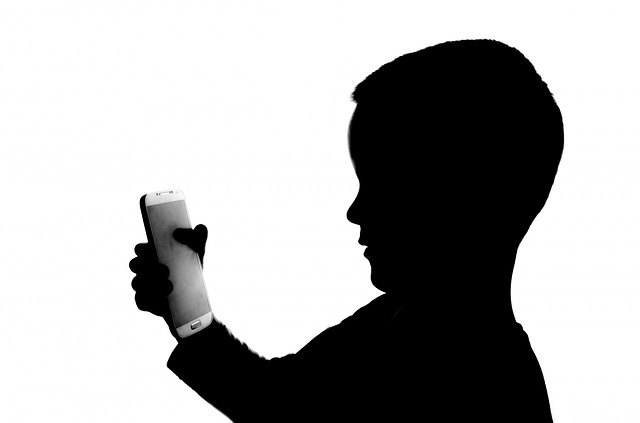 |
| Image source: Pixabay |
According to the research of Wave7, the primary reason that most Filipinos use social media is to 'stay in touch with friends and family'. Other reasons include: to meet new people, to have fun, and to share new experiences to friends and followers (Locsin, 2014). Social media is also a primary tool to share pictures. With the prevalence of mobile devices with digital cameras, capturing and sharing pictures is easier than ever.
Users share pictures of themselves, friends, and family. It is common for parents to post pictures of their children, a way to share with other friends and family the events in the life of a child. But is this a violation of the child's privacy?
Background
The internet has existed in the Philippines since 1994. The first social media website that became popular in the Philippines was Friendster, which became popular in Southeast Asia around 2005. Facebook replaced it as the top social media site in the Philippines for the last decade. Facebook began in 2004 as a social network for the use of college students in Harvard University, which gradually expanded to other universities in the US, and eventually accessible to the world (Ellison, 2007). As of March 2016, it is now the biggest social media platform in the world with over 1.65 billion users (Facebook, 2016). It is also the most popular social media platform in the Philippines.
As of January 2015, 90% of Filipinos who use the internet (or 40 million people) have active accounts in social media. The prevalence of mobile devices and internet connections have also encouraged this growth. With the major telecom companies like Globe and Sun Cellular providing affordable internet connection rates and free access to Facebook and Twitter, users are even more encouraged to use the services.
Sharing pictures in social media has become much easier with more affordable mobile devices with digital cameras. There are also many social media platforms like Instagram devoted solely for sharing of photos. It is also common to see parents posting pictures of their children.
However, social media had also drawn ire as a source of exploitation. There has never been a time in history where information was the most available, but these has also been abused. These tools for interaction and communication has also been used as tools for the exploitation of children, such as child pornography which is recognized as a prevalent problem in the Philippines. Technology just made the creation and proliferation of illegal materials easier (Trinidad, 2005).
Posting in social media seems all in good fun, but users tend to overlook these implications on privacy rights, especially on children who are not old enough to consent to these pictures being posted online. As of now, little information exists exploring the implications of the current conditions of parents sharing photos of their children on social media since it is fairly a new phenomenon given the increasing use of the internet.
As of now, France is the only country in the world with laws prohibiting parents to post pictures of their children without their consent (Chazan, 2016).
Children’s Rights to Privacy on the Internet
The right to privacy is a basic human right. Though, with the advent of social media where information is easily created and shared, there is always a risk of invasion. The right to privacy of an individual must also apply to their online activities. Children are vulnerable to being abused, and photos of children should be protected by parents who are more aware of security and privacy of these social media services.
The right to privacy is embedded in various international declarations. According to Article 16 of the United Nations' Universal Declaration of Human Rights, "No one shall be subjected to arbitrary interference with his privacy, family, home or correspondence, nor to attacks upon his honour and reputation. Everyone has the right to the protection of the law against such interference or attacks." This is also included in UNICEF's Convention on the Rights of a Child, in which the Philippines is a part (United Nations, 2016).
Children's right to privacy is also embedded in Philippine laws and is covered by the Constitution. Children are still under their parents' protection. Parents should be responsible in ensuring the right to privacy of their children and these right extends to their photos.
Conclusion
While parents must monitor their child's online activities, parents themselves must be vigilant about what they share. Even with the easy access and sharing of information, the privacy of a child is a right to be protected by law and also should extend to social media. Undoubtedly, social media will be here for years to come, and thus there should be limits to what we can share. As adults, parents have the responsibility to protect the privacy of their children online, and educate their children about their security and privacy on the internet.
There should be laws that should govern the publication of images of children on social media
Publishing a photo of a child on the social media, even if it was your own, should be regulated.
At the very least, there should be more awareness as to children’s right to privacy in the ever-growing realm of the internet especially on social media.
References
Chazan, David. (2016). French parents 'could be jailed' for posting children’s photos online. Retrieved May 15, 2016 from http://www.telegraph.co.uk/news/worldnews/europe/france/12179584/French-parents-could-be-jailed-for-posting-childrens-photos-online.html
Ellison, N. B. (2007). Social network sites: Definition, history, and scholarship. Journal of Computer‐Mediated Communication, 13(1), 210-230.
Facebook Newsroom. (2016)."Stats." Retrieved May 15, 2016 from http://newsroom.fb.com/company-info/
Igna, Henri Joshua. (2015). Internet, social media and mobile use of Filipinos in 2015. Retrieved May 15, 2016 from https://telehealth.ph/2015/03/26/internet-social-media-and-mobile-use-of-filipinos-in-2015
Losin, Joel. (2014). Pinoys lead the world in social media engagement–study. Retrieved May 15, 2016 from http://www.gmanetwork.com/news/story/367983/scitech/technology/pinoys-lead-the-world-in-social-media-engagement-study#sthash.ek11sTGp.dpuf
Trinidad, Arnie C. (2005). Childhood pornography in the Philippines. Manila: UP Center for Integrative and Development Studies and UNICEF Manila. Retrieved May 15, 2016 from http://www.unicef.org/philippines/Child_Pornography.pdf









0 Comments